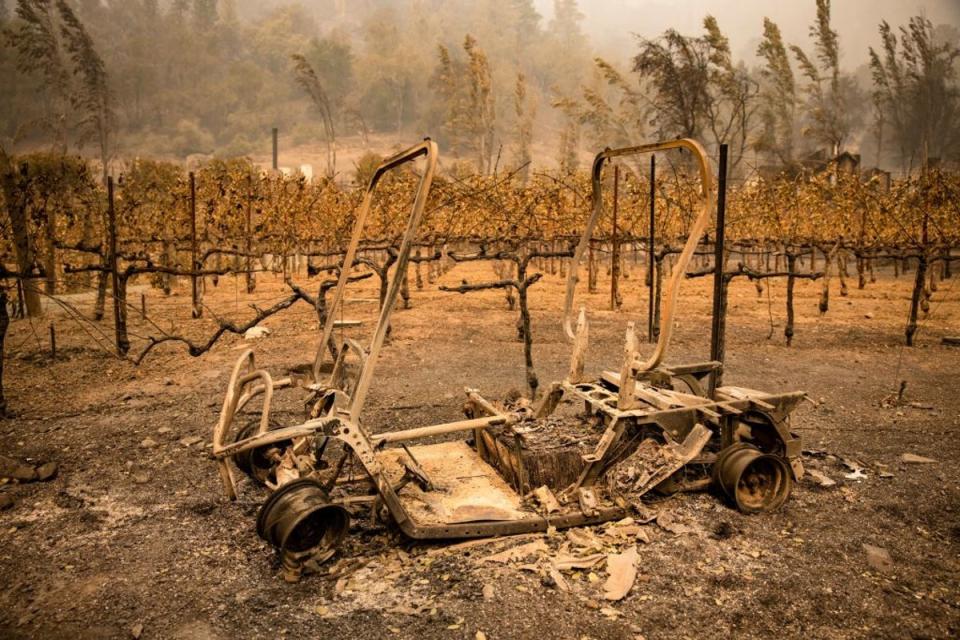Your favorite wine could disappear thanks to climate change. These are the areas most at risk
Some of the world’s most prized wine regions face being wiped out in the coming decades due to impacts of the climate crisis, according to new research.
Winegrowing mainly takes place in regions that are warm enough for grapes to ripen but without intense heat or rainfall - such as southern France, northern Spain and Italy, California, parts of Australia, South Africa and Argentina.
More frequent extreme heat, drought and erratic rainfall are already impacting wine making. Higher temperatures shift grape harvests to warmer parts of the summer, changing the wine’s quality, and spurring new diseases and pests. In France’s Bordeaux and Alsace regions, for example, harvest dates are already significantly earlier, leading to increases in the wine alcohol level.
Problems will only increase as the global temperature rises. The world is about 1.2 degrees Celsius (2.2F) hotter on average than 150 years ago. On the current trajectory, the world will pass 2C (3.6F) around 2060, according to Berkeley Earth.

If global warming exceeds 2C, some 90 per cent of the winegrowing areas in the coastal and plains regions of Spain, Italy, Greece and southern California may be unable to produce renowned wines in a way that’s financially viable.
The study, published this week, was conducted by France’s department of agriculture, public research institute, Inrae, and several French universities. Researchers combed through 250 pieces of scientific literature from the past 20 years to analyze how changes in temperature, rainfall, humidity, radiation and carbon dioxide affect wine production.
There was little good news for some of the world’s most lucrative wine regions.

About 10 per cent of global wine comes from the US west coast, and in particular northern California’s Napa Valley, where some of the best wines are produced.
Below 2C, coastal regions of California will remain suitable but winemakers will need to adapt to increasing risks of drought, heatwaves and wildfires.
But above this temperature threshold, coastal California will become a very warm and arid climate, probably resulting in a decline in wine quality and economic sustainability, the researchers said.
The same goes for Europe, which produces most of the world’s wine. Below 2C, the regions will still be suitable for winegrowing albeit with more drought-resistant grape varieties, and techniques to prevent water loss from the soil and erosion. Reducing the density of vineyards can also help, several studies conducted with winegrowers revealed.
Above 2C, most southern Mediterranean regions might be unsuitable, with vineyards finding their only option will be to relocate to higher altitudes.

The study also found that depending on how much the planet heats, up to 65 per cent of traditional Australian vineyards may no longer be able to produce wine, whereas wine-producing regions in New Zealand have the potential to expand by 15–60 per cent by the end of the century.
When it comes to South America, northern Argentinian wine regions might need to move from lowlands to higher slopes of the Andes above 2C global heating. New areas might become suitable to grow grapes including Argentinian Patagonia, and at the high altitudes of the Ecuadorian and Colombian Andes.
“About 90 per cent of the traditional wine regions situated in the lowlands and coastal regions of Spain, Italy and Greece could be at risk of disappearing by the end of the century,” the researchers wrote.

“Only a minor portion of this loss (less than 20 per cent) can be potentially compensated for by shifting vineyards towards mountainous areas.”
But while established regions may struggle, new wine regions could flourish. Higher temperatures could lead to more wine from northern France, Washington and Oregon in the US, Canada’s British Columbia and Tasmania, Australia. It could even create new wine regions in the south of England, Belgium, Netherlands and Denmark.


